THE ORDER MARSUPIALIA
Marsupialia – Pouched Mammals (About 270 species.)
Although marsupials join the ranks of other mammals as distinct from egg-layers, they are nevertheless a unique group deserving of recognition at a high level. They thus receive their own infraclass of Metatheria, Changing Mammals, which separates them from the other 18 orders of true placental mammals, which are placed in the infraclass Eutheria, True Mammals. Practically speaking, such a classification simply emphasizes that marsupials are far more advanced than monotremes, yet remain considerably more primitive than the placentals.
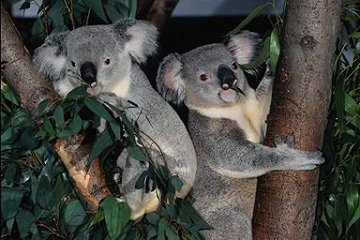
The two infraclasses have evolved along different lines since their separation in the early Cretaceous or Jurassic. The major split was due to the physical separation of Australia from the Asian mainland, trapping the marsupials, but leaving them in an otherwise mammal-free environment, free from predators. This allowed the marsupials to “converge” into many different forms, which included the bear-like koala, the mouse-like kangaroo rat, the weasel-like cuscus, the mole-like marsupial mole, and the dog-like Tasmanian wolf – now extinct.
The principal feature distinguishing marsupials is, of course, the pouch, or marsupium, which gives the order its name.
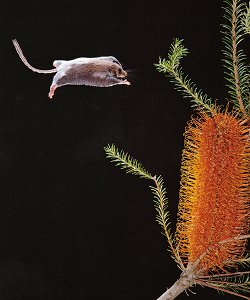
Actually, the entire reproductive system, of which the pouch is only a part, is more like the egg-laying Monotremes, except that marsupials are viviparous (live birth) animals instead of egg layers. The female reproductive tract is double, fusing at the time of birth into a single birth canal independent of the vagina. Embryonic marsupials, like eggs, have a yolk sac for nourishment, rather than the placenta of more advanced mammals, and are therefore born in an extremely immature state.
They make their way unaided to the pouch, attach themselves to a nipple, and continue to develop while suckling. The number of nipples varies from 2 to 19 in the various species, and the female pouch itself may be well developed or a mere fold in the abdominal skin. Generally speaking, the more nipples in the pouch, the larger the litter of young. The pouch opens toward the front in most marsupials, as most easily seen in the kangaroo, but toward the rear in others, such as the koala and the bandicoot.
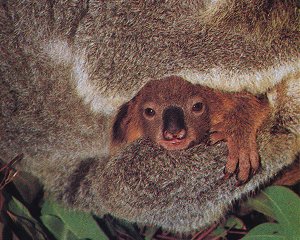
The broad radiation of marsupials into different ways of life is especially reflected in their limb structure. Long, powerful hind legs and specialized feet characterize the kangaroos, wallabies, and their kin, whose hopping habits are well known. The gray kangaroo can leap eleven feet off the ground, several feet higher than the very best human high-jumper, and it can leap over 44 feet, almost half again as far as the very best human broad-jumper.
Some of the other adaptations include the New World opossums, which have a clawless, opposable hallux (the big toe) on the hindfoot which they use much like a thumb to gain a foothold in the trees since they are arboreal inhabit. The Neotropical water opossum has developed webbed feet. The bandicoots of Australia are highly adapted to fast running, so the digits of their hind feet are greatly reduced, except for one enlarged toe which has somewhat the same effect as a horse’s hoof. Burrowing and gliding marsupials have likewise developed modified limbs and. All in all, marsupials thrive by adapting to their different environments well.
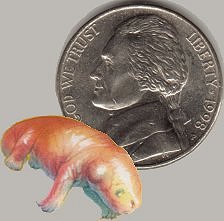
We usually associate marsupials with Australia, where, indeed, the order displays its famous diversity of species. Of the approximately 251 living species, 170 are native to Australia or the adjacent islands of Tasmania, New Zealand, New Guinea, and the smaller ones. The remaining 51 species are the few living descendants of a once extensive marsupial group in the Americas. They are now relatively unobtrusive, such as the Virginia opossum (the only true “opossum”) and similar forms like the tiny mouse opossums or rat opossums, and are all greatly overshadowed by the placental mammals of North and South America. The array of marsupials in Australia is grouped into thirteen distinct families, from little honey possums, marsupial moles, and bandicoots, even including carnivorous “cats” (not true placental cats), gliders, and wombats, kangaroos, and eventually to the unique koala.
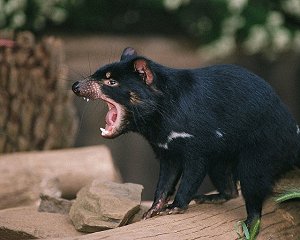
Marsupials have a small, relatively simple brain compared with that of placental mammals. The braincase is generally narrow. This does not mean that they are slow-witted or lethargic. Even the sleepy-eyed koala can jump from tree to tree, and the Tasmanian devil is a big challenge for any other animal, no matter the size.
Check out the following specific marsupials:
Mouse opossum
Virginia opossum
Yapok (Water opossum)
Antechinus (Mardo)
Kowari
Dunnart
Tiger cat
Tasmanian devil
Numbat (Banded anteater)
Bandicoot
Cuscus (Phalanger)
Brushtail opossum
Pygmy glider
Pygmy possum
Leadbetter’s possum
Sugar glider
Striped possum
Honey possum (Noolbenger)
Koala
Ringtail
Greater glider
Wombat
Rock wallaby
Pademelon
Red kangaroo
Grey kangaroo (Forester)
Euro (Wallaroo)
Tree kangaroo
Rat kangaroo
Potoroo
